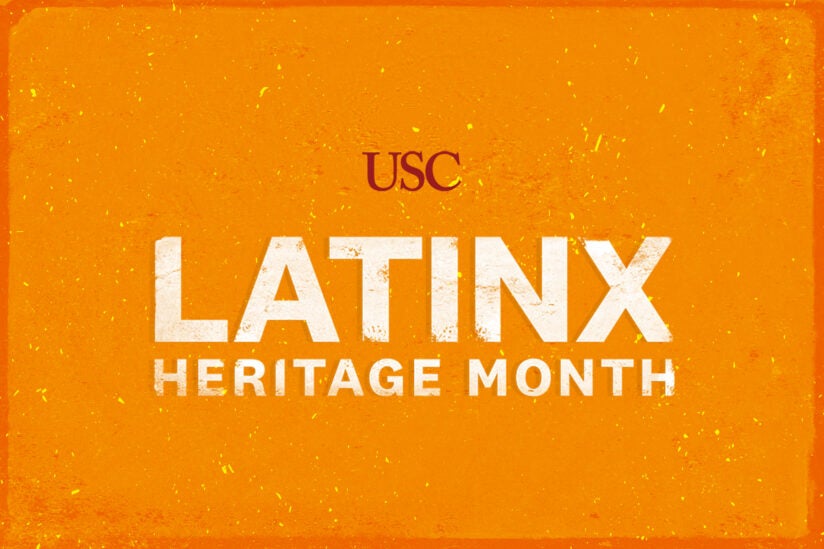
USC Dornsife’s Sarah Portnoy has traveled to Cuba, Spain and Mexico to expand her worldview of Latino culture and migration through a culinary lens. (Photo/Courtesy of Sarah Portnoy)
How L.A.’s culinary roots lie in its Mexican tradition
USC Dornsife’s Sarah Portnoy provides a guide to L.A.’s culinary history, its cultural shifts and its transformation.
Sarah Portnoy’s labs are scattered all over the city of Los Angeles and beyond. You can also find her at loncheras (food trucks) and in the back of the house at any number of Mexican restaurants.

Portnoy, a teaching professor of Spanish at the USC Dornsife College of Letters, Arts and Sciences, has traveled to Cuba, Spain and Mexico over the past quarter century, expanding her worldview of Latino culture and migration through a culinary lens.
As USC celebrates Latinx Heritage Month, LA Plaza de Cultura y Artes in downtown Los Angeles is featuring Portnoy’s curated exhibit, Abuelita’s Kitchen: Mexican Food Stories, which explores traditional recipes, kitchen artifacts and oral histories. Her documentary of the same name was screened Thursday at the USC Fisher Museum of Art. We talked with her about her work.
What’s the relationship between food and migration?
People have always migrated and crossed national borders. As they migrate, they take their traditional cuisine with them. Those dishes, like the culture itself, adapt and change in a new environment — in this case, the Mexican and Mexican American communities of Southern California.
Chefs and home cooks adapted their dishes to the ingredients available in the United States and to the American appetite for large plates of food with the creation of the “combo plate.” This evolution is part of the invention of a mass-produced version of Mexican food for the U.S. market, one that succeeded in establishing “Mexican” restaurants across the country.
Mexican cuisine is hardly the only one to have been transformed by other cultures. Transculturation — Fernando Ortiz’s term for the merging and converging of cultures — has historically taken place between colonizer and colonized. It is present in many cuisines. Italian dishes such as pizza and spaghetti with tomato sauce are inextricably linked to the tomato, yet tomatoes did not make their way from Mesoamerica to Europe until the 16th century.
How is the Latino population of Los Angeles different compared with populations elsewhere?
Unlike older, more established East Coast cities, L.A. was once part of Spain and later Mexico — it is a very Mexican city and increasingly a very Central American one, too. It is a city that the border crossed after Mexico lost the Mexican American War in the mid 19th century [and Mexico’s northern border moved south of L.A.], but it kept that Mexican feel — the streets in downtown once had names in Spanish. Not only is it a city defined by its Mexican and Latino history, but more recently its Korean, Japanese, Jewish and Chinese [cultures], and much more.
How does Los Angeles culture influence L.A. cuisine?
Well, first of all, its sheer proximity to Mexico and history of Mexican immigration — on a good day you can be in Tijuana in a few hours.
Trends can come from the bottom up. How often have you seen street tacos on the menu at a high-end restaurant for $25?.
Sarah Portnoy, Abuelita’s Kitchen
Secondly, it’s a young city — after the Transcontinental Railroad (1876-1900), it had only 100,000 residents. The city only exploded in population in the first few decades of the 20th century. So, unlike people in more established cities such as New York, Paris and London, among Angelenos there is a lack of culinary hierarchy. Angelenos are more open to new trends — and trends can come from the bottom up. How often have you seen street tacos on the menu at a high-end restaurant for $25? There are about 12,000 sidewalk vendors in L.A., and food trucks are part of the culture.
Diabetes is prevalent in the Latino community. How do you square that with a celebration of foods that are not always healthful? Can that be part of the conversation?
While Mexican American cuisine such as Tex-Mex and Cal-Mex can be considered unhealthful — often loaded with sour cream and cheddar cheese — Indigenous Mexican cuisine is based on ingredients grown together in the milpa farming system: beans, squash and corn. Corn is the main ingredient in all Mexican cuisine.
It is only with the Spanish conquest and the imposition of European culture that Mesoamerican cuisine adopted the use of animal products such as pork and beef and dairy. Traditional Mexican cuisine is incredibly healthful. Little dairy is used in most dishes, a vegetable soup is usually served at the beginning of every meal, and comida (lunch) is the main meal and includes soup, a main dish that almost always has vegetables, and tortillas.
In fact, diabetes and obesity only became an epidemic in Mexico in the past 25 years, largely as a result of globalization, as fast food and sodas became widely accessible and soda became cheaper to drink than water.




